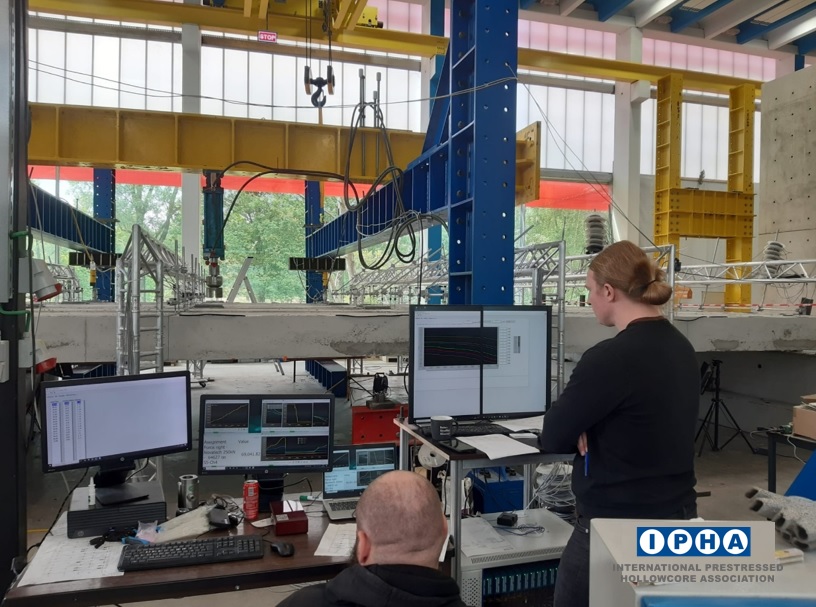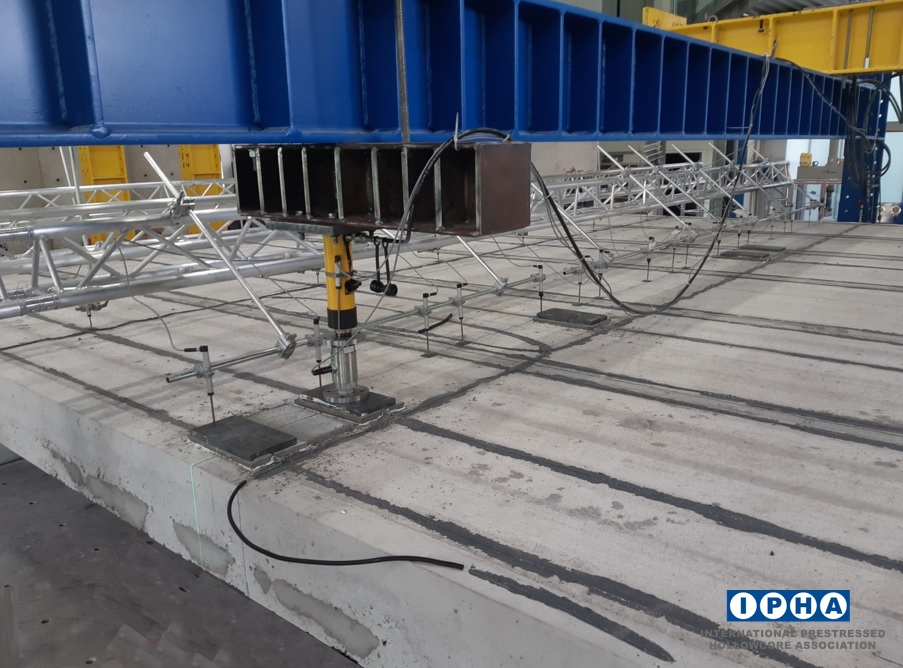IPHA HOLCOLODIS Study – Update
Back in 2022, it was announced that IPHA would fund a new research study into load distribution between hollowcore slabs. Running until 2025, HOLCOLODIS includes a series of tests on hollowcore floors, backed up by literature, FEM analyses and analytical analyses. It continues a proud history of IPHA involvement in research to enhance understanding of hollowcore slabs as a flooring solution.
Previous research projects include HOLCOTORS (shear and torsion) and HOLCOFIRE (fire resistance).
HOLCOLODIS aims to derive better design rules for hollowcore floors for concentrated loads and large openings, enhancing competitiveness for hollowcore floor construction. This project has been co-ordinated with IPHA’s Technical Committee (Ronald Klein-Holte, Pieter van der Zee, Lars Reimer, Abdulkhadir Roble) and under the supervision of its president, Dr. Wim Jansze. The project is managed by PhD student Miłosz Jeziorski and Prof. Wit Derkowski, Cracow University of Technology and Linnaeus University, provides the academic guidance.
State-of-the-Art
In July 2023, a state-of-the-art, 170 page report was published for IPHA members with historical tests analysed with complementary FEM analyses. In May 2024, a condensed paper entitled “Vertical load distribution in precast hollow core floors: State of the art and future perspectives” co-authored by Miłosz Jeziorski, Wit Derkowski and Elena Michelini, was also published in the Structural Concrete Journal by Wiley and is freely available for download.
Finite Element Analyses
In preparation for the test series, blind FEM predictions were conducted for the three subsequent tests on 150, 320 and 500 mm deep floors. In June 2023 and August 2024, research papers on the FEM modelling and results were presented at fib conferences in Istanbul and Budapest.
Further Tests
During the next phase of the project, experimental research was conducted early in 2024 in co-operation with the ACB2 laboratory of Hasselt University. At the start, single hollowcore slabs (HC150, HC320, HC500) were tested for reference. Then, a unique test series was carried out of on three floor fields each composed of six prestressed concrete hollow core slabs on a real scale, subjected to point loads in several positions and then tested up to the failure. Around 100 measurement channels and hundreds of meters of fiber optic sensors supplied and supported by Nerve-Sensors gave a unique data set for analysis.
Over the summer of 2024, the third stage of experimental tests on the distribution of concentrated loads in precast floors made of prestressed HC slabs was completed. The floor area of over 100 m², made of 500 mm units, was successfully subjected to loading and thus ended the test series.
Next Steps
Further analysis of the data will take place, practical design rules will be derived and reported to IPHA members in due course. For dissemination, a Technical Seminar is planned in the autumn of 2025 to discuss the preliminary results with the IPHA members, before the final recommendations will be published in a project end report.
The funding of this project forms part of IPHA’s ongoing commitment towards playing an active role in research and development in the industry. All documentation and reports are available via the Hollowcore Knowledge Center.

